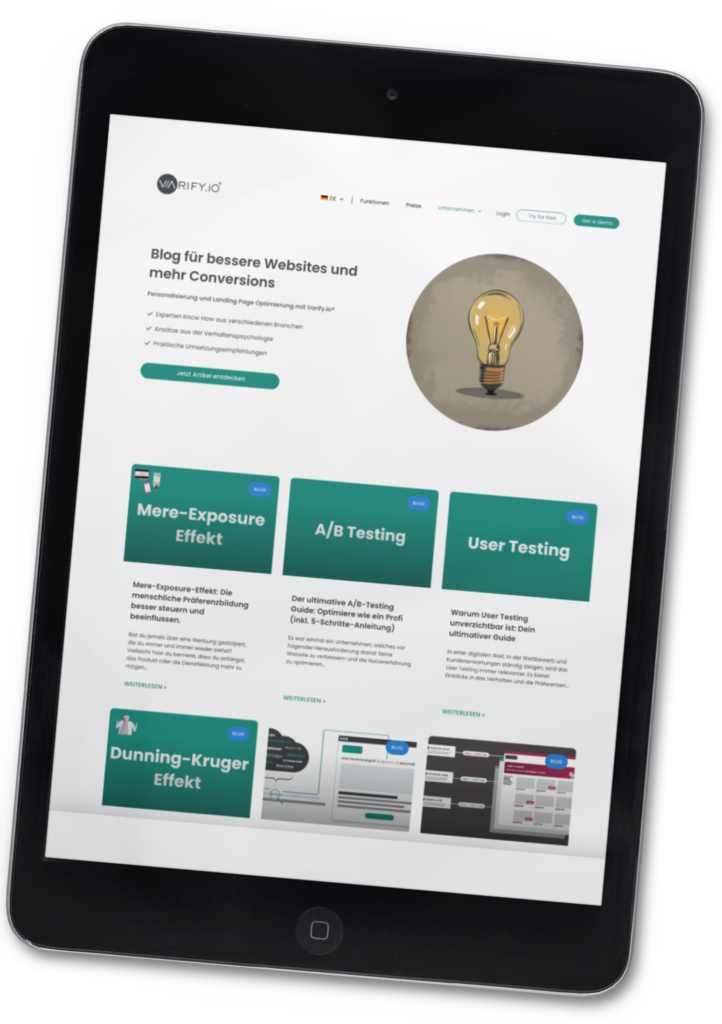Have you ever wondered why the same information is perceived differently and leads to different decisions?
The answer is provided by the framing effect: a fascinating cognitive distortion from psychology.
This effect shows how strongly our perception and decision-making are influenced by the way in which information is presented.
In this article you will learn all about the framing effect and how it is used in different areas.
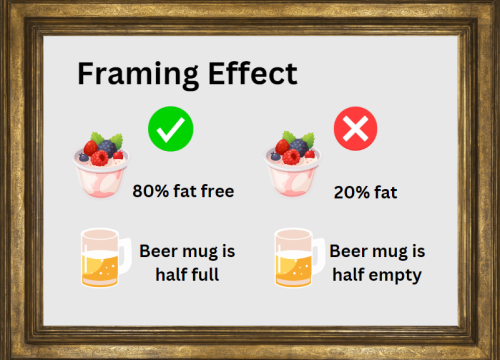
Table of contents
What is the framing effect?
Imagine reading two statements about the same yogurt: "80% fat-free" and "contains 20% fat". Although both statements are identical, they leave different impressions. This fascinating psychological trigger is known as the framing effect.
The framing effect shows how the "frame" or context in which information is presented influences our perception and decisions. Emotions play a key role here. Studies have shown that positive or negative framing can significantly change the emotional response to the same information.
By becoming aware of this cognitive bias, we can learn to question information more critically and make more informed decisions.
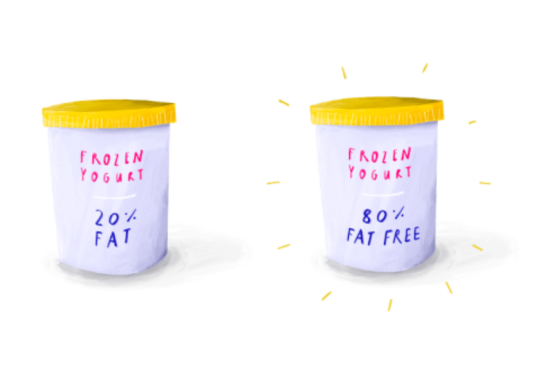
In marketing, politics and the media, the framing effect is used specifically to influence opinions and guide decisions.
The question of perspective: Is the glass half empty or half full?
The framing effect illustrates how our perception and decisions are heavily dependent on perspective. A well-known metaphor for this is the "half-full" or "half-empty" glass. This simple statement shows how different formulations can make the same situation appear differently. This difference in perception leads us to the different associations that can be created by positive or negative framing.
Positive framing
Positively associated frames emphasize the advantages and positive aspects of a situation. They can create an optimistic mood and have a motivating effect.
"This software increases your productivity by 30%."
The focus is on increasing efficiency and the benefits of the new software, which can motivate users to use it.
"Regular meditation makes you feel more relaxed and focused."
The positive effects of meditation on well-being are emphasized, which can encourage people to integrate meditation into their everyday lives.
"With this savings plan, you can build up assets over the long term."
The savings plan is presented as a path to financial growth and stability, which can incentivize savings.
"Our organic products support your health and the environment."
The health and ecological benefits of buying organic products are emphasized, which can appeal to environmentally conscious and health-oriented customers.
"This new technology is revolutionizing the way we work."
The innovation and potential improvements in working life through the new technology are emphasized, which can promote acceptance and use.
Negative framing
Negatively associated frames emphasize the disadvantages and risks, which often leads to cautious behavior and defensive decisions.
"If you don't use this software, you lose valuable working time."
The focus here is on the disadvantage of not using the software, i.e. the loss of time, which can create pressure.
"Without regular meditation, your stress levels rise and your concentration suffers."
The statement highlights the negative consequences of a lack of mindfulness, which can lead to a feeling of threat or anxiety.
"Without this savings plan, you risk financial insecurity in old age."
Instead of opportunities, risk is emphasized, which can arouse fears about the future and lead to defensive behaviour.
"If you don't buy organic products, you are putting your health at risk and harming the environment."
This wording emphasizes feelings of guilt by presenting the failure to purchase as a health and environmental concern.
"Anyone who doesn't use this new technology will be left behind in the long term."
The argument here is the fear of backwardness, which can create pressure and a feeling of loss of control.
Framing in practice: application examples
Media
The media are masters at using the framing effect. They can influence public opinion through the targeted choice of words and visual representations. Reports on the same event can be perceived completely differently depending on the focus and context. This is particularly evident in reporting on political events, social movements or crises. Skillful framing can lead to an event being perceived as positive, negative, significant or irrelevant. This influences not only individual opinions, but also social moods and behaviors.
Example: A news program could report on a climate demonstration by either highlighting the peaceful and committed young activists standing up for the planet (positive framing), or emphasizing the traffic congestion and inconvenience to commuters caused by the demonstration (negative framing).
Digital marketing
In digital marketing, the framing effect is used specifically to control the perception of products or services. Companies use specific messages and visual elements to create positive associations and influence customers' purchasing decisions. Framing in digital media is often subtle and sophisticated and can be achieved through customer reviews, influencer collaborations or targeted advertising campaigns, for example. Presenting a product in a favorable light can significantly increase its appeal and perceived value.
Example:
An online store could emphasize a product as a "bestseller" and "particularly popular" (positive framing), while other similar products receive less attention.
Marketing
The framing effect is also a central element in traditional marketing. Advertising messages are designed to emphasize the positive characteristics of a product and minimize possible disadvantages. This type of presentation helps to present the product in the best light and gain the trust of consumers. The use of framing in marketing goes far beyond simple advertising slogans and encompasses the entire design of campaigns, including color choice, images and language style.
Example:
An advertisement for a toothpaste might emphasize that it "removes 99% of bacteria" (positive framing) instead of mentioning that it "does not remove 1% of bacteria" (negative framing).
Politics
In politics, the framing effect is a strategic tool. Politicians and governments use framing to present political measures and laws in a certain light. By the way political issues are presented, they can influence public opinion and gain or reject support. Political framing strategies are often designed to arouse emotions, whether by stoking fears or evoking hope and confidence.
Example:
A government could present a new tax as a "contribution to social justice" (positive framing) or as an "additional financial burden" (negative framing).
Ethics and morals when using the framing effect
Marketers should use the framing effect wisely. The key is to strike a balance between appealing presentation and truthful information. By developing and adhering to ethical guidelines, companies can maintain the trust of their customers while communicating effectively. Long-term success is based on integrity and the responsible use of information technology.
Strategies for using the framing effect
1. understand your target group:
- Your framing should always be tailored to the specific needs, values and expectations of your target group. A deep understanding enables you to frame messages in such a way that they really resonate.
2. use positive framing techniques:
- People react more strongly to positive messages. Formulate your statements in such a way that the positive aspects of your offer are in the foreground. Show what benefits and successes your target group can expect.
3. stay consistent:
- Make sure that your framing is consistent with your brand identity and your overall messages. Consistency creates trust and ensures that your brand comes across as authentic.
4. test and optimize:
- As with any marketing strategy, it's important to test different framing approaches. Use A/B testing to find out which messages work best and adjust your strategy based on the results.
In-depth strategies
Create emotional connections: Tell stories and use visual elements to create an emotional connection. Emotions enhance the impact of your message and make it unforgettable.
Contextualization: Put your message in a relevant context. This helps your target group to understand and recognize the importance and urgency of your message.
Forward-looking statements: Emphasize future benefits and successes. People often have positive expectations of the future and respond well to messages that promise them a better future.
Ethics and transparency: Make sure to remain ethical and transparent. Avoid manipulative techniques and make sure your messages are honest and truthful. Long-term trust is based on integrity.
Mechanisms of the framing effect
Loss aversion
People weigh losses more heavily than equally large gains. This means that the fear of losses often outweighs the motivation to achieve gains.
Example: People prefer a safe option ("You are guaranteed to win 50 euros") over a riskier option ("You have a 50% chance of winning 100 euros and a 50% chance of winning nothing"), even though the mathematical expectation is the same.
Emotional reactions
Cognitive associations
Social and cultural values
Expectation effects
Reference dependency
Context dependency
Priming
Metaphors and analogies
Narrative structures
Summary and conclusion
The framing effect is a powerful phenomenon that shapes our lives in many areas, from politics and marketing to everyday decision-making. Through the targeted framing of information, we can subtly influence people's perceptions and decisions.
It is therefore essential to understand the concept of the framing effect and to use it responsibly and effectively. Given the growing understanding of the importance of cognitive psychology in decision making, we are likely to see even more innovative applications of the framing effect in the future. This knowledge not only provides the opportunity to frame messages more effectively, but also the responsibility to do so ethically to maintain trust and credibility.
Further psychological triggers

Halo effect
The halo effect ensures that a single quality influences the entire image.

Scarcity
The feeling that something could soon no longer be available arouses desire.

Dunning-Kruger effect
The effect describes how people with little experience overestimate their abilities.
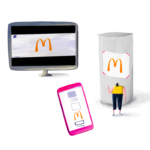
Mere exposure effect
The more often we see, hear or experience something, the more we like it.
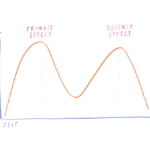
Primacy effect
The first piece of information remains most strongly in our memory and shapes our perception.

Nudging
Nudging uses small incentives to subtly guide behavior without restricting freedom of choice.

Diderot effect
The effect describes how a new purchase awakens the desire to buy more suitable products.
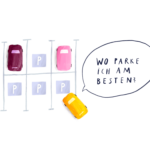
Paradox of Choice
Many options can seem overwhelming. Few options simplify the decision.

Decoy effect
When we are presented with an unattractive option, the more attractive alternative seems even more tempting

Affect heuristics
Quick decisions are often guided by strong feelings rather than rational considerations.

Social Proof

Endowment effect
People tend to attribute a higher value to things just because they are in their possession.

Framing effect
The way in which information is presented significantly shapes perception.

New
The way in which information is presented significantly shapes perception.

New
When we are presented with an unattractive option, the more attractive alternative seems even more tempting

